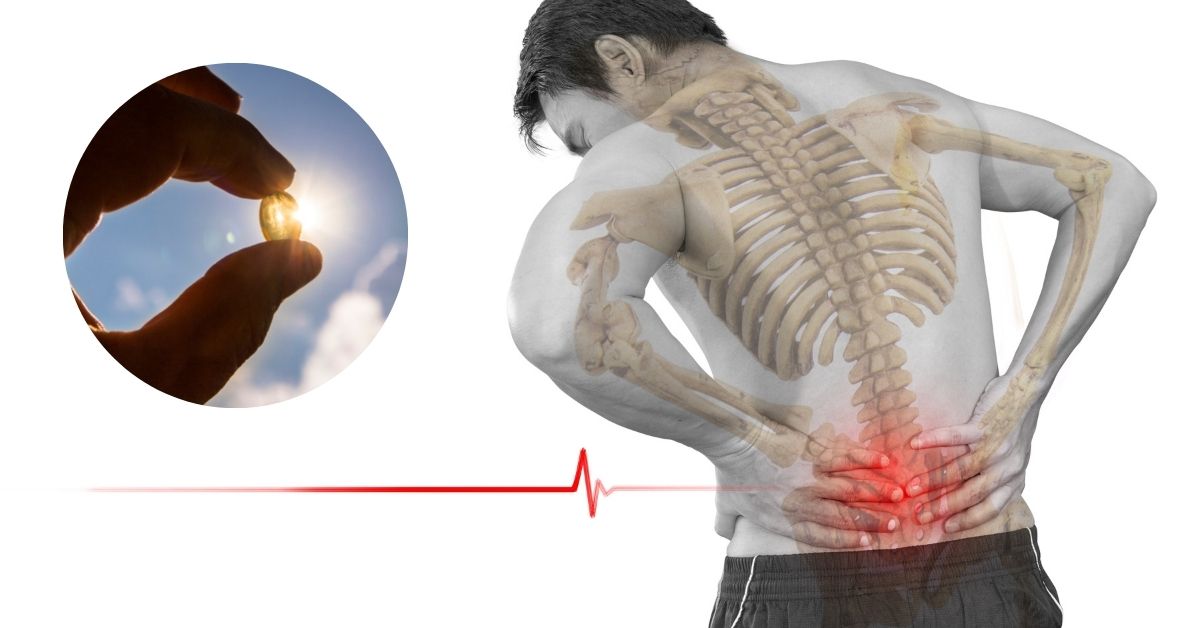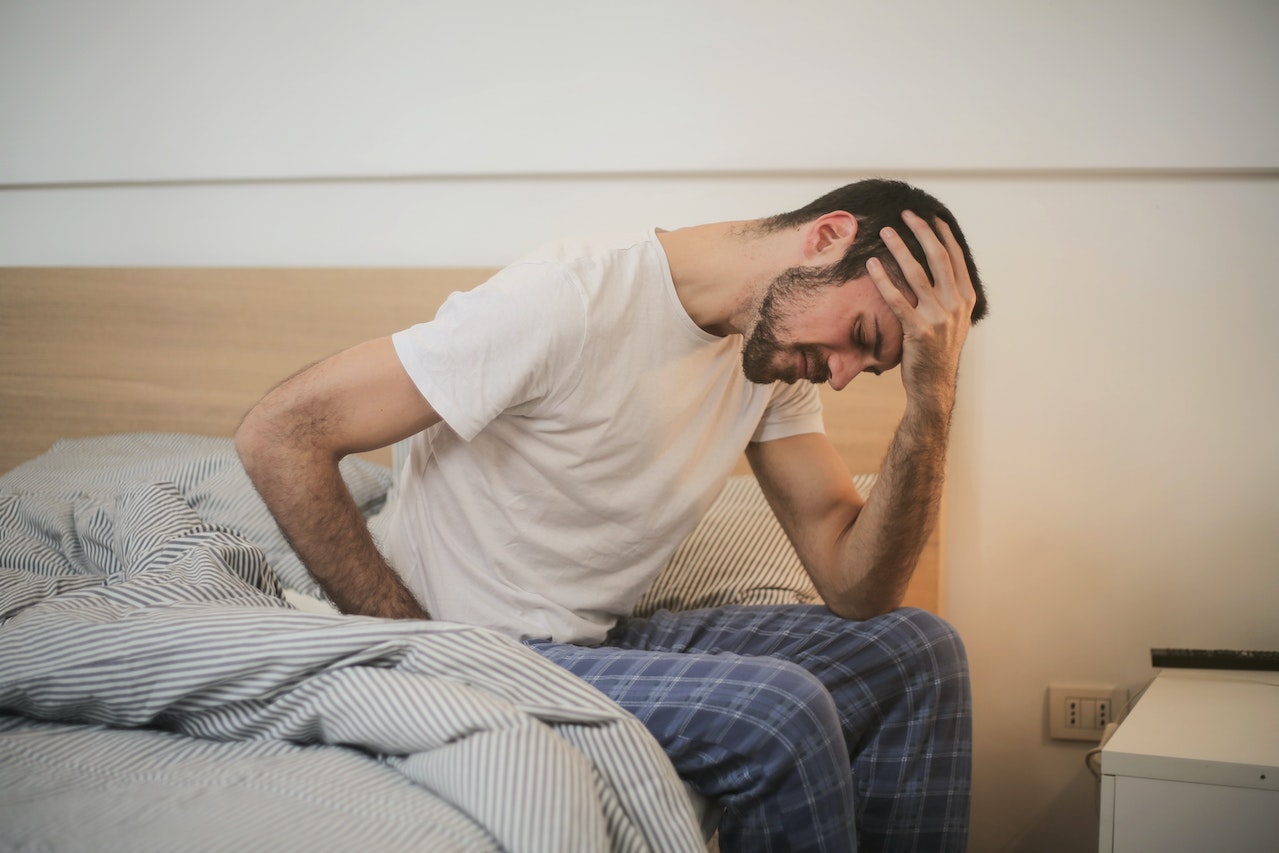Vitamin D Deficiency: Could Your Back Pain Be Due To A Deficiency In The Essential Vitamin?


Back Pain Causes
Back pain is one of the most common reasons people go to the doctor or miss work, and it is a leading cause of disability worldwide. Back pain ranges from a muscle ache to a shooting, burning, or stabbing sensation. In addition, the pain may radiate down your leg or worsen with bending, twisting, lifting, standing, or walking.
According to Dr. Devon Rubin from the Mayo Clinic School of Medicine, 80% of the population will suffer some type of back pain during their lifetime. This is approximately three out of four adults. (1)
Figuring out the cause of your back pain can sometimes be difficult and frustrating. A large number of health conditions may cause back pain. Poor posture is one of the most common but there are other possibilities you should be aware of. Some of these may affect the neck, the upper back and shoulders, or the lower back. These include muscle strains, pinched nerves, stress, injury, and infections. New research suggests that vitamin D deficiency may also be responsible for chronic back pain.
Vitamin D and Back Pain
What is vitamin D and how might it influence your back?
Vitamin D, the “sunshine vitamin,” helps maintain bone health in several ways as it helps the body to absorb calcium. It was discovered in 1952 when studies were conducted to find the dietary substance lacking in children with rickets, a weakening and softening of the bones that causes deformation.
Unlike other vitamins, vitamin D functions as a hormone, and every single cell in your body has a receptor for it. It is a fat-soluble vitamin and hormone-like compound responsible for increasing the intestinal absorption of calcium, magnesium, and phosphate. Its two main forms are vitamin D3 (cholecalciferol) and vitamin D2 (ergocalciferol) with D3 accepted as the most important type of vitamin D. Your body makes it from cholesterol when your skin is exposed to sunlight. While vitamin D2 is produced by plants, vitamin D3 is the type that is made by your skin when you are exposed to direct sunlight. It is activated by two protein enzyme hydroxylation steps, the first in the liver and the second in the kidneys. (2)
According to Dr. Andrew Jagim, director of sports medicine research at Mayo Clinic, vitamin D has been proven to promote skeletal muscle metabolism, improve bone health, maintain immune function, and even reduce risk factors for certain cancers.
He goes on to say, “[Vitamin D] has also been shown to reduce exercise-induced muscle damage and subsequent levels of muscle soreness following intense workouts.” (3)
Vitamin D Deficiency
Vitamin D deficiency is very common. It is estimated that about 1 billion people worldwide have low levels of this vitamin. People who live near the equator and get frequent sun exposure are less likely to be deficient, as their skin produces enough vitamin D to satisfy their body’s needs. Most at risk of a vitamin D deficiency are the elderly, people that are overweight, and those that rarely venture outside. (4)
According to a 2011 study, 41.6% of adults in the US are deficient. This number goes up to 69.2% in Hispanics and 82.1% in African-Americans. (5)
Research Studies for Vitamin D
Bone pain and lower back pain may be signs of inadequate vitamin D levels in the blood.
Although more clinical studies need to be conducted regarding the relationship between low vitamin D levels and back pain, early research results have shown some promise. Here are some examples:
- In one controlled study, people with vitamin D deficiency were nearly twice as likely to experience bone pain in their legs, ribs, or joints compared to those with blood levels in the normal range. (6)
- Another study examined the association between vitamin D levels and back pain in more than 9,000 women ages 60-85. The researchers found that those with a deficiency were more likely to have back pain, including severe back pain that limited their daily activities. (7)
- A study out of India evaluated a total of 328 patients, both men and women, with a history of chronic low back pain. The mean age of the study population was 43.8 years. All patients were found to have below normal plasma vitamin D levels. (8)
- Vitamin D deficiency appears to be significantly associated with lumbar disc degeneration and low back pain among postmenopausal women, according to new research from the North American Menopause Society. The 2018 study evaluated degrees of back pain, levels of circulating vitamin D, and prevalence of osteoporosis compared to normal in 232 postmenopausal women with a history of back pain. They found a definite correlation between vitamin D insufficiency/deficiency and the severity of the participant’s back pain. (9)
Diet for Vitamin D
Vitamin D is present naturally in only a few foods including fish liver oils, egg yolk, liver, fatty fish like salmon, tuna, sardines, and mushrooms especially cremini and portabella. Consequently, some countries have required the addition of vitamin D to manufactured foods such as milk, cereals, energy bars, and infant formula. If you do not eat enough of these foods, or get enough sunshine, you probably should consider taking vitamin D supplements.
The reference intake for vitamin D refers to total intake from food, beverages, and supplements, and assumes that calcium requirements are being met. The RDA is 600-800 IU of vitamin D daily. In some situations, such as old age or those living in upper regions of the US in winter months, higher intakes of 1000 to 2000 IUs per day or even higher may be required to improve vitamin D insufficiency. This amount should be monitored by your doctor to avoid vitamin D toxicity. (10)
Low levels of vitamin D in the population as a whole suggest that most people need to take a vitamin D supplement. This may be especially true for seniors, as the ability to synthesize vitamin D in the skin declines with age. — Andrew Weil, MD
Do you have constant, debilitating back pain? Click here to find relief.
SOURCES
- Rubin D.l. Epidemiology and Risk Factors for Spine Pain. Neurol Clin. 2007; May;25(2):353-71
- https://ods.od.nih.gov/factsheets/VitaminD-HealthProfessional/
- https://www.spineuniverse.com/wellness/vitamin-d-back-pain
- https://www.ncbi.nlm.nih.gov/pmc/journals/
- https://pubmed.ncbi.nlm.nih.gov/21310306/
- https://pubmed.ncbi.nlm.nih.gov/21199469/
- https://pubmed.ncbi.nlm.nih.gov/23758943/
- https://pubmed.ncbi.nlm.nih.gov/26431139/
- https://www.contemporaryobgyn.net/view/vitamin-d-deficiency-leads-lower-back-pain
- https://newsnetwork.mayoclinic.org/discussion/mayo-clinic-q-and-a-how-much-vitamin-d-do-i-need/









